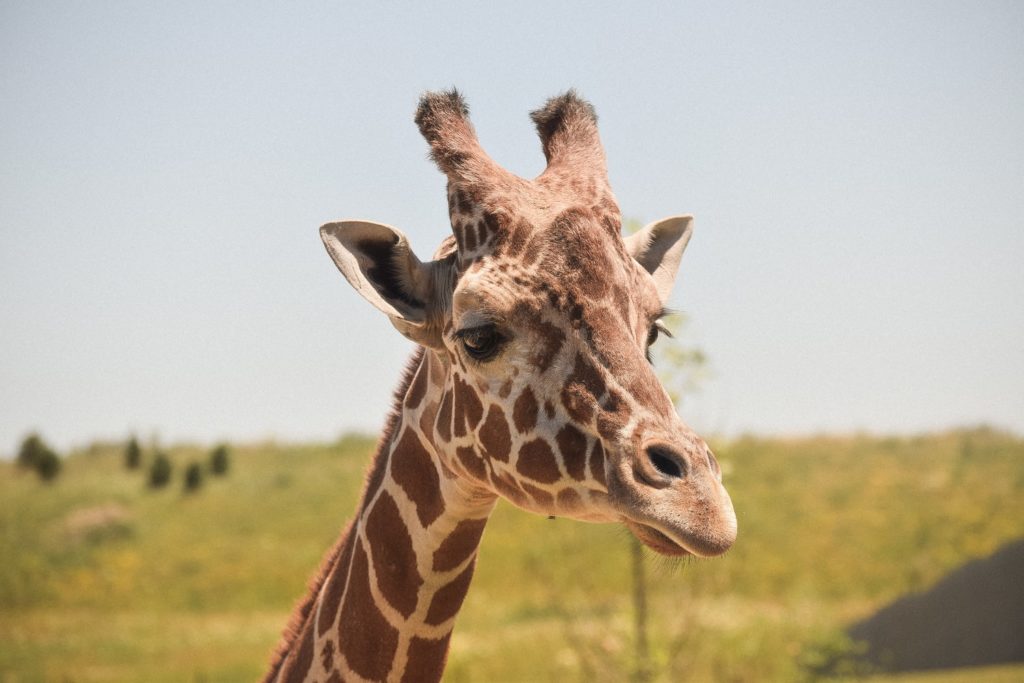
Where do giraffes live?
Giraffes live on the African continent. They are found mainly from northern Chad to the southern part of South Africa and from western Niger to eastern Somalia. They live mainly in savannah and grassy areas.
How do giraffes live?
These animals become active at dawn and dusk. They live mainly in small, open-minded groups. Their composition is constantly changing. The herd consists of a maximum of 32 representatives of this species of animals. Most often they consist of mothers and their young. While moving by car, it reaches a speed of about 7 km / h, while galloping it reaches a speed of up to 56 km / h. Giraffes are cautious animals that do not show aggression. However, when there is a need to defend, he kicks with the front legs.
Characteristics..
These animals are characterized by a long neck, large eyes decorated with eyelashes. Giraffes have excellent eyesight.
Breeding among giraffes..
These animals reproduce polygamously. Males test fertility in females by tasting their urine. They prefer young but adult females. During copulation, the sounds are mainly made by the male – like a cough.
Giraffe pregnancy lasts 460 days (15 months) and gives birth every 18 months. When giving birth to the young, they fall from a height of 1.5 m. The female is not able to lower her body more during childbirth. Newborn giraffes weigh about 100 kg and stand on their feet about 30 minutes after giving birth. 10 hours later, he can run.
Threats..
A well-developed sense of sight and hearing, as well as a long neck allow you to see the threat in time. There are leopard attacks on giraffes, but the only real threat is lions. In the event of an attack, they simply run away. When they cannot do so, they attack by hitting their hooves.
What do giraffes eat?
Giraffes are herbivores. They eat mainly tree leaves, shoots, and twigs.
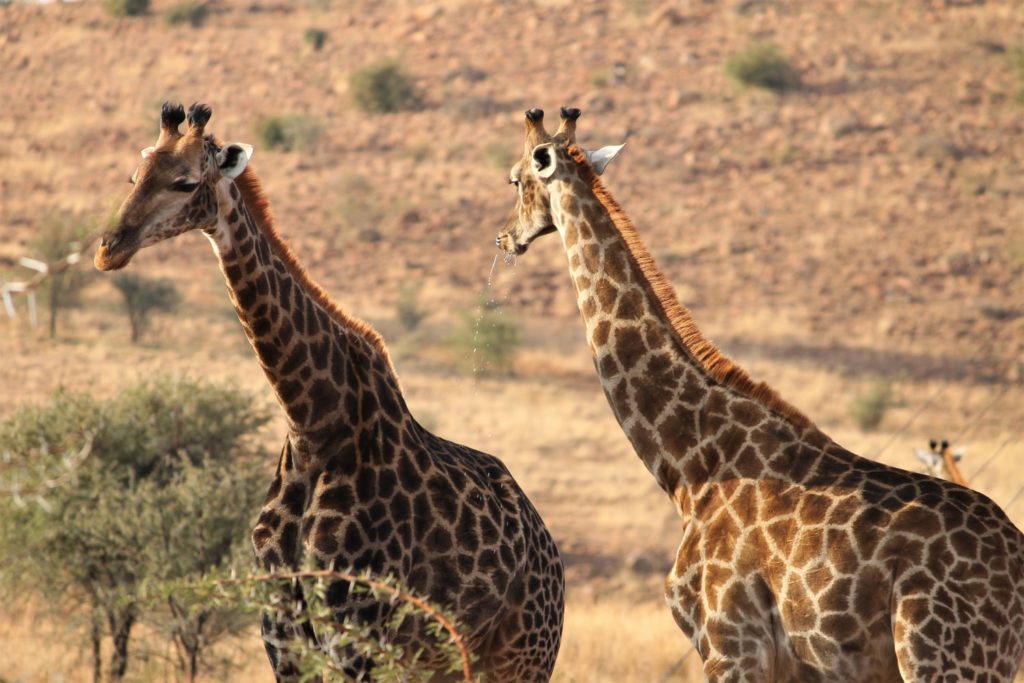
*Fun Facts about Giraffes*
- Giraffes are the largest living animals on Earth. However, their neck is too short to reach the ground. To reach it and drink the water, they must awkwardly spread their front legs or kneel.
- In practice, however, giraffes rarely need to bend down. They drink extraordinarily little water every few days. Adequate hydration of the body is provided by plants that eat.
- In Mozambique, overhead power lines must be at least 12 m high. This ensures the safe passage of giraffes.
- Giraffes make practically no sounds. Not because they cannot. They just do not want to.
- Giraffes are now extinct in at least seven African countries.
- They are the tallest animals in the world. Male specimens reach a height of up to 18 feet (5.5 meters).
- Giraffes can survive longer without water than camels.
- The giraffe’s legs themselves are taller than most people (1.8 m).
- Nearly 50% of young giraffes do not survive the first 6 months. They often fall prey to hyenas, leopards, and wild dogs.
- Giraffes are the tallest mammals on Earth. Their legs themselves are about 6 feet (1.80 meters) high.
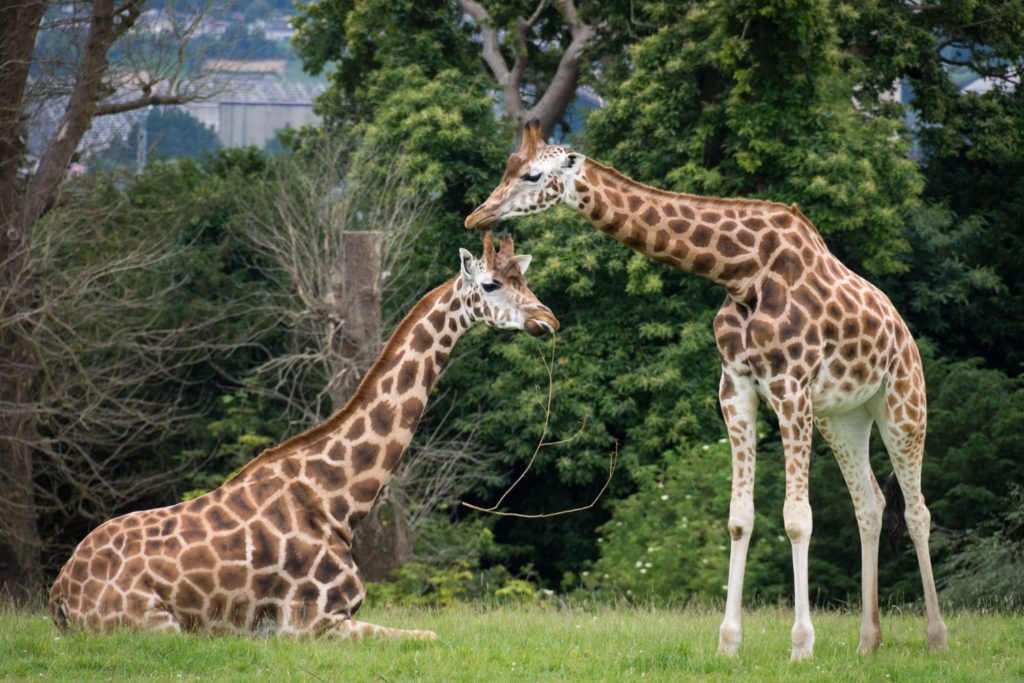
- They are found in the arid savannas of Africa, where they roam through open plains and forests.
- Giraffes eat more than 88 pounds (40 kilograms) of food a day. On a leafy diet, this means they spend most of their time eating.
- Despite their long necks, giraffes have the same number of cervical vertebrae as humans. There are only seven of them. Each individual vertebra is large, measuring up to 0.82 feet (25 centimeters) in length.
- Newborn giraffes stand about 6 feet (180 cm) tall which makes them taller than most adults.
- The average giraffe weight is 1,192 kg (2,628 lb.) for an adult male and 828 kg (1,825 lb.) for an adult female with maximum weights of 1,930 kg (4,250 lb.) and 1,180 kg (2,600 lb.) respectively. Despite its long neck and legs, the giraffe’s body is relatively short.
- An adult male can grow to about 18 feet (5.5 meters). That is more than three adults.
- The research published in Current Biology in 2016 shows that the giraffe is not a single species, but a subfamily containing four distinct species – northern giraffe (Giraffa camelopardalis), southern giraffe (Giraffa giraffa), reticular giraffe (Giraffa reticulata) and Masai giraffe (Giraffa tippelskirchi).
- Although the giraffes are very tall, they do not sleep much. Most sleep between 10 minutes and two hours a day.
- The giraffe’s neck is too short to reach the ground. Therefore, he must spread his legs to the side to drink water.
- Giraffes sleep standing most of the time.
- The scientific name of the giraffe, Giraffa camelopardalis, comes from the ancient Greek belief that it looked like a camel in a leopard coat.
- Giraffe growth is helpful in observing predators such as lions and hyenas. Their excellent eyesight allows them to spot hungry beasts from afar.
- Many calves are killed in the first months of life because of wild animals.
- For short distances, giraffes can run at speeds of up to 45 km per hour.
- Giraffe gives birth standing up.
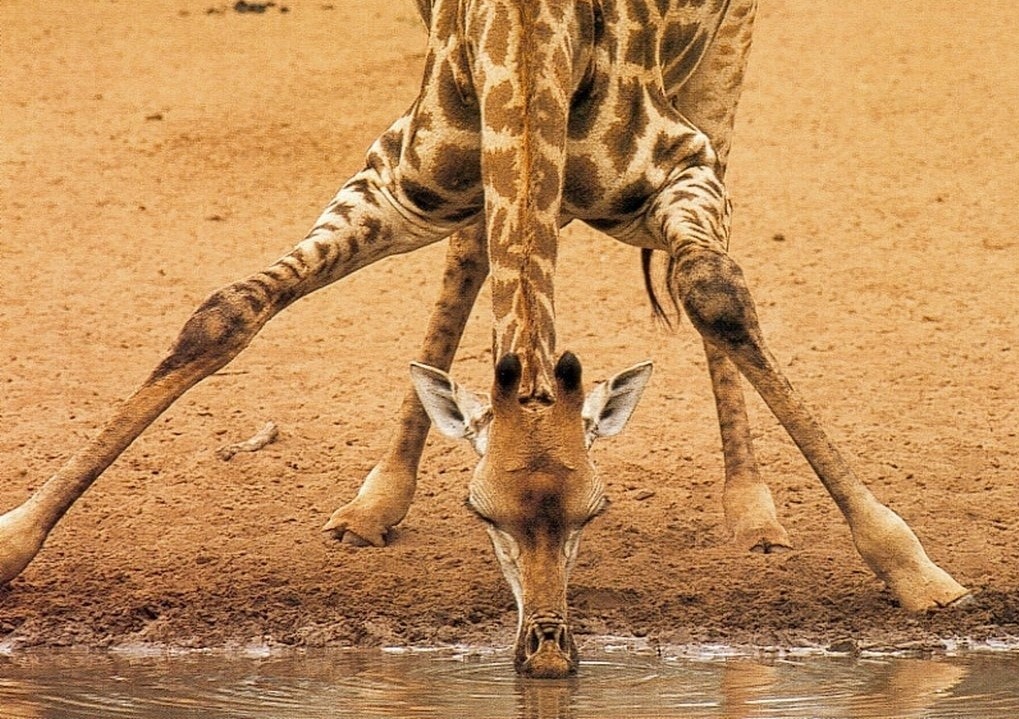
- In just 10 hours of birth, baby giraffes can run around with their families.
- They love to eat the acacia tree and have long necks reaching the leaves and buds on the trees.
- Male giraffes use their little horns to sometimes fight other males.
- The giraffe patterns are completely unique. No two giraffes are alike.
- Giraffes only need to drink water once every few days. Most of their water is obtained from a plant-based diet.
- In the wild, these beautiful creatures live about 25 years. They live longer in captivity, even 40 years.
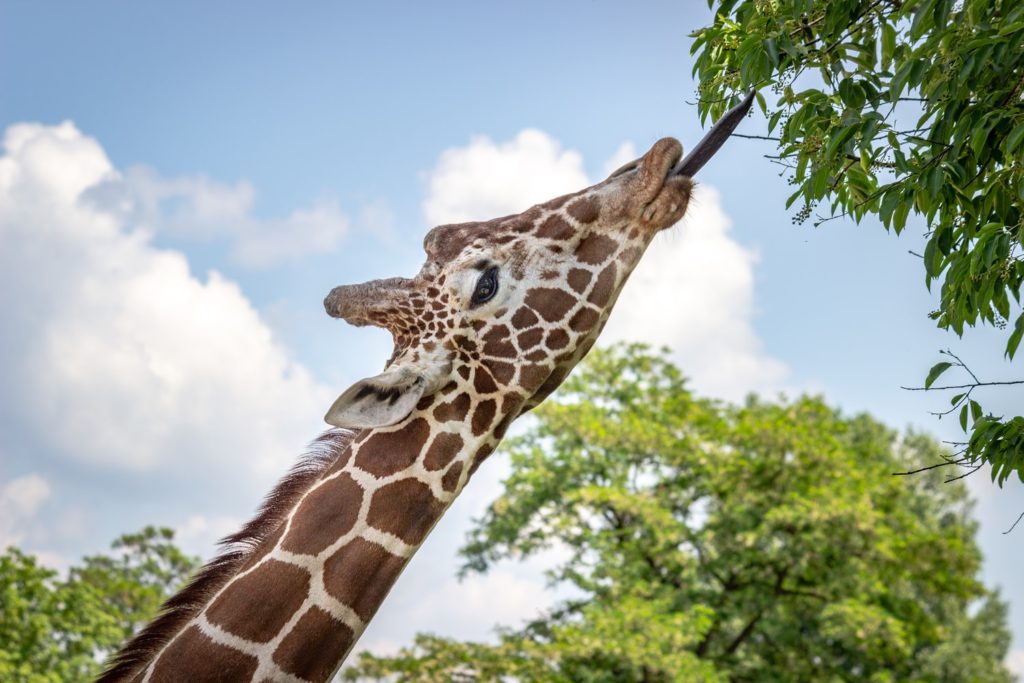
- Giraffes make sounds. They snort, hiss, and make flute-like sounds, as well as low-pitched noises beyond human hearing.
- Their tongues can be if 1,47 feet (45 cm), which allows them to get food from very tall trees.
- Females often return to where they were born to give birth to new offspring.
- Giraffes are very social animals, and they roam in groups. These groups typically have about 15 members led by an adult male. The remaining members are females and young males.
- Between pregnancies, female giraffes have only two weeks to become pregnant again.
- The calves receive a stern greeting to the world when they fall from about 150 centimeters to the ground.
- The intestines of an adult giraffe can measure over 229 feet (70 meters).
- Giraffe hooves reach the size of a dinner plate with a diameter of 1 foot (30.5 cm).
- Giraffes cannot yawn
- These animals can close their nostrils. Such a procedure is to protect against a sandstorm or ants.
- There is a giraffe with a white color. The Omo giraffe that lives in Tanzania.
- These animals have the same number of cervical vertebrae as humans. 7 to be exact.
- The giraffe’s tongue is black. This is due to pigmentation that protects it from UV radiation.
- Giraffes live up to 28 years.
- There are approximately 150,000 giraffes worldwide. There are 45,000 of them in Kenya alone.
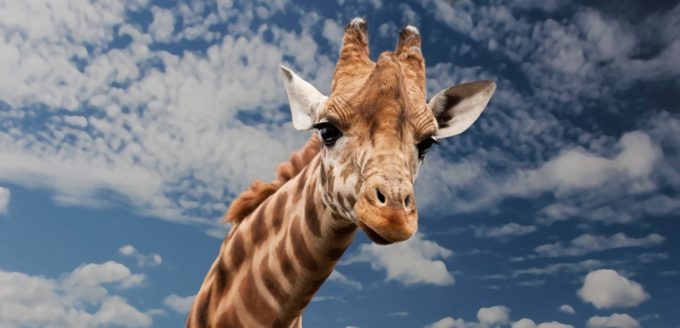
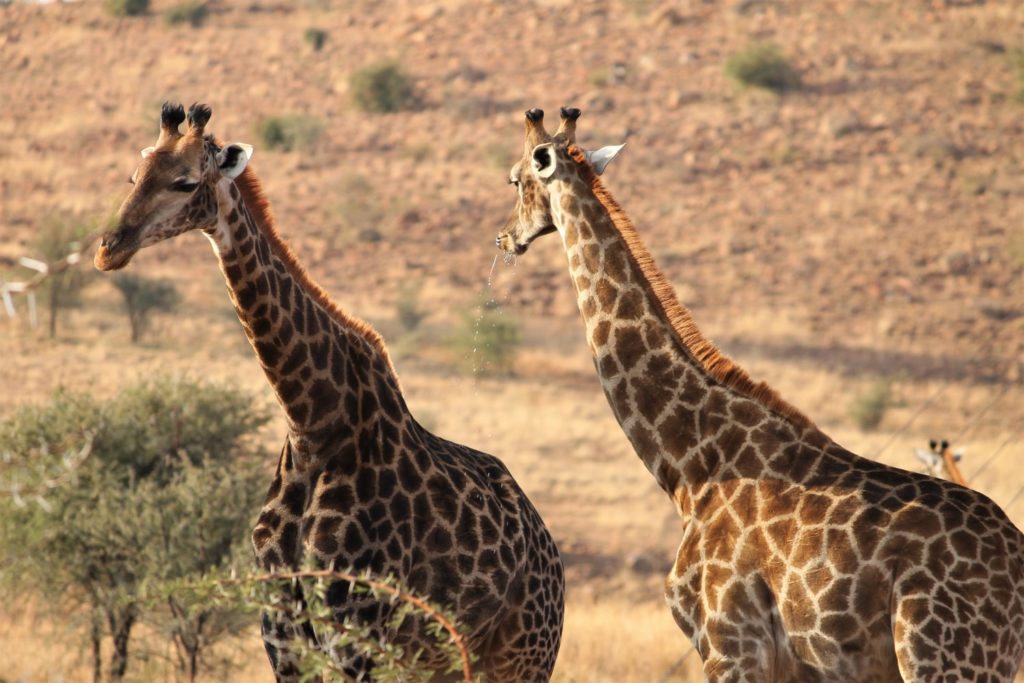
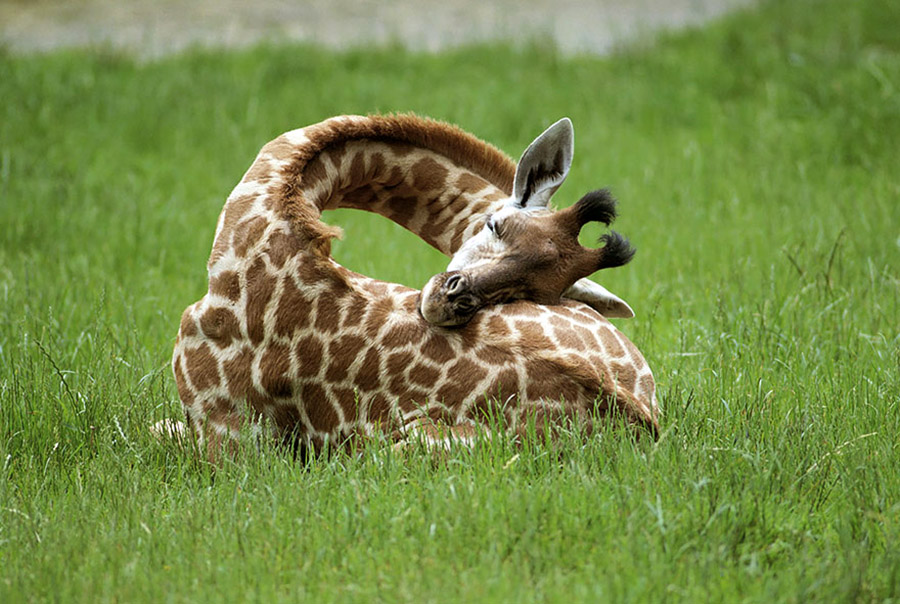
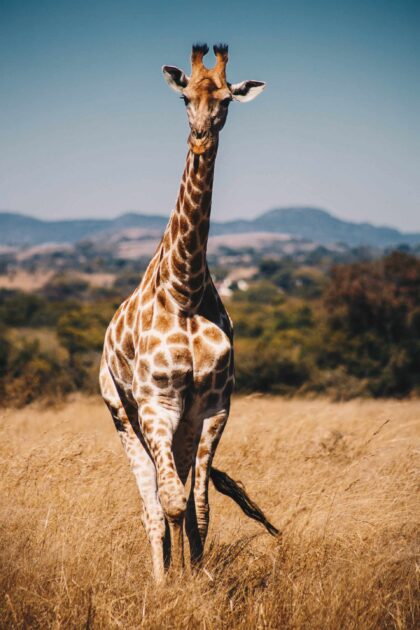
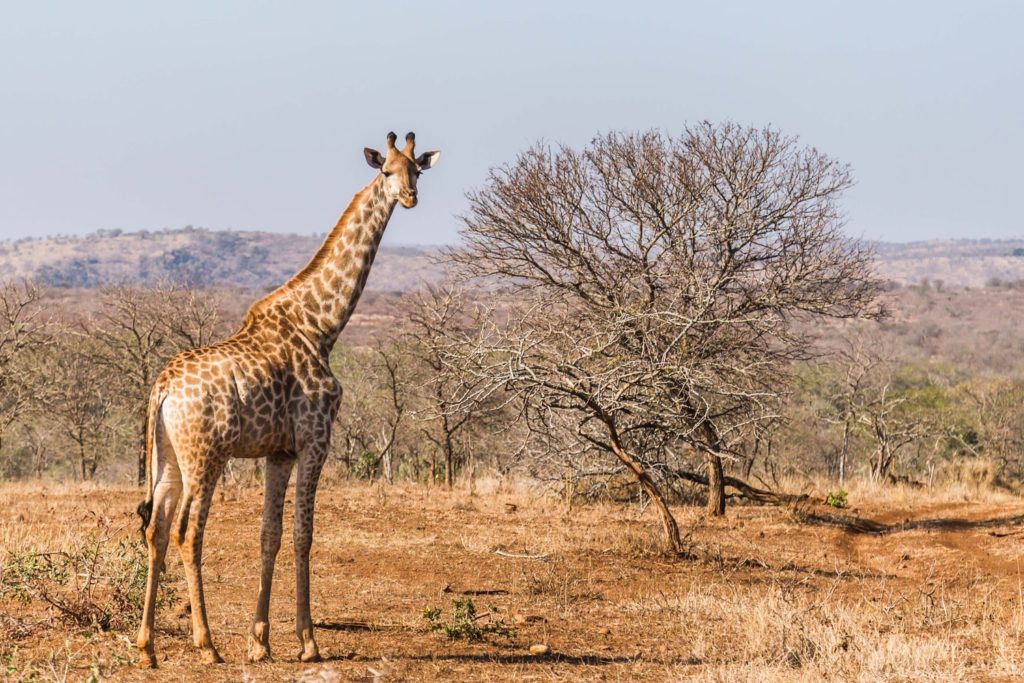
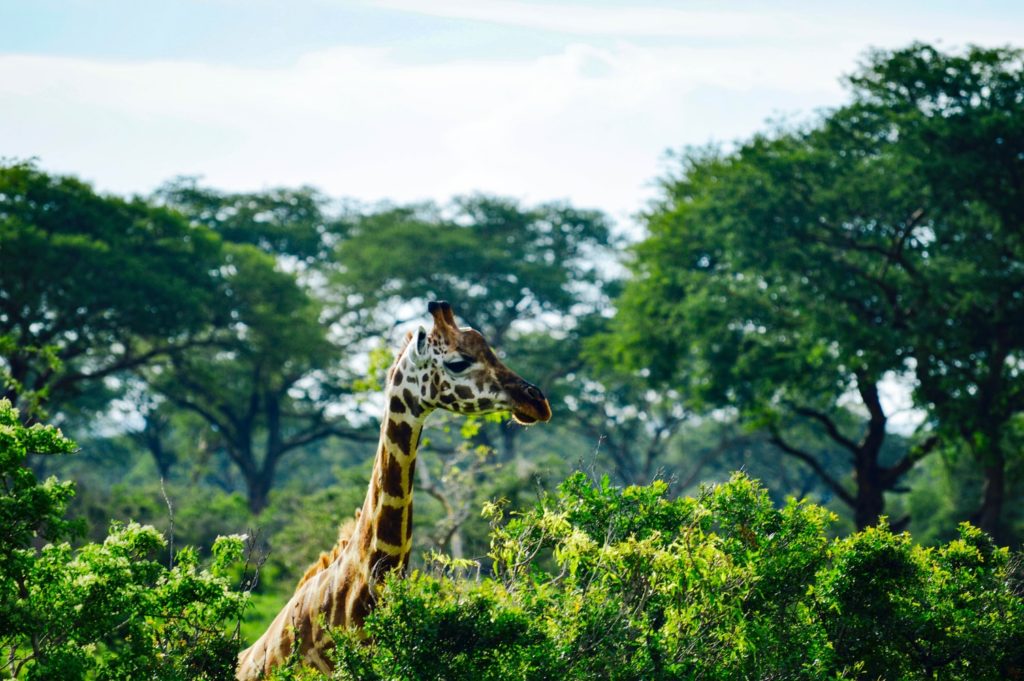



Wow very informative ❤️❤️❤️